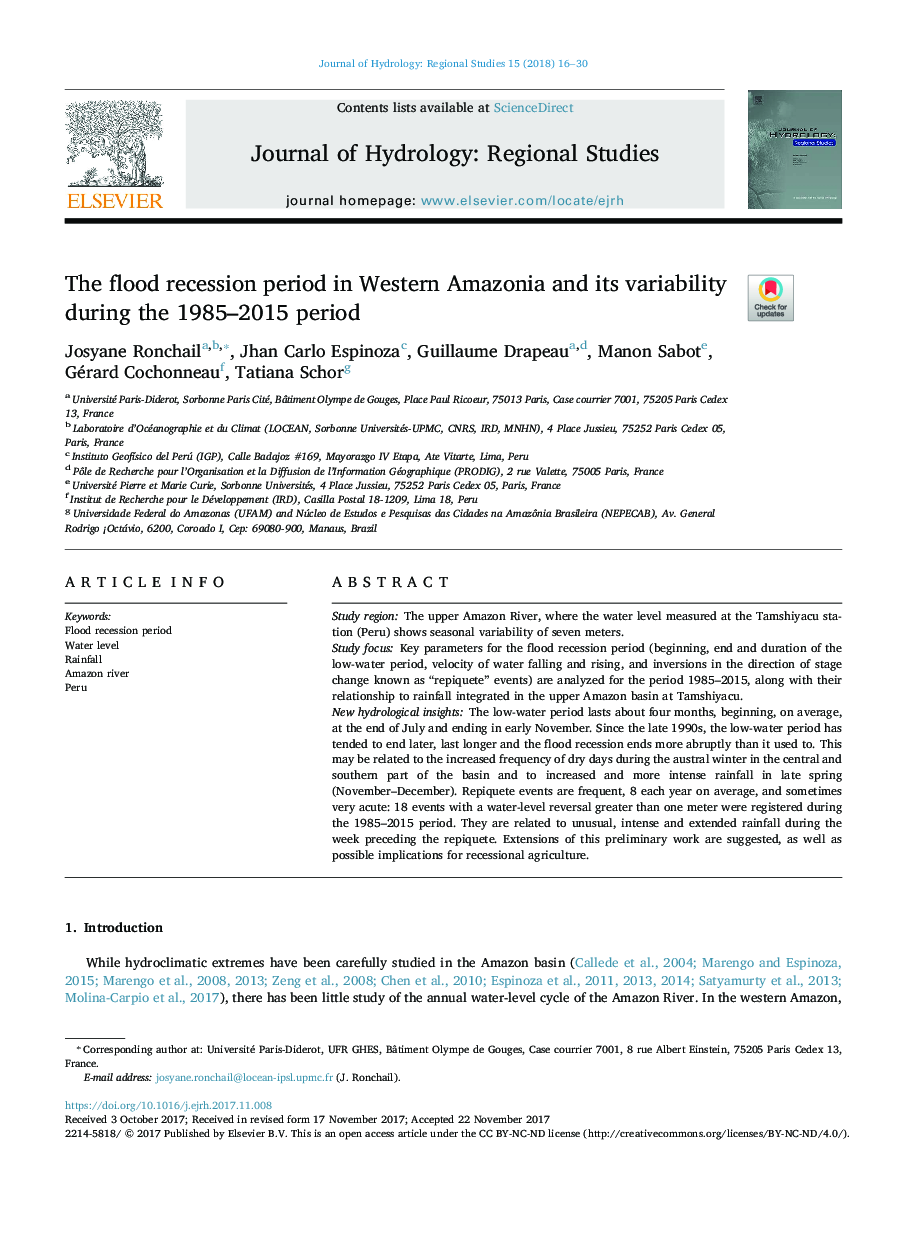| Article ID | Journal | Published Year | Pages | File Type |
|---|---|---|---|---|
| 8862882 | Journal of Hydrology: Regional Studies | 2018 | 15 Pages |
Abstract
The low-water period lasts about four months, beginning, on average, at the end of July and ending in early November. Since the late 1990s, the low-water period has tended to end later, last longer and the flood recession ends more abruptly than it used to. This may be related to the increased frequency of dry days during the austral winter in the central and southern part of the basin and to increased and more intense rainfall in late spring (November-December). Repiquete events are frequent, 8 each year on average, and sometimes very acute: 18 events with a water-level reversal greater than one meter were registered during the 1985-2015 period. They are related to unusual, intense and extended rainfall during the week preceding the repiquete. Extensions of this preliminary work are suggested, as well as possible implications for recessional agriculture.
Keywords
Related Topics
Physical Sciences and Engineering
Earth and Planetary Sciences
Earth-Surface Processes
Authors
Josyane Ronchail, Jhan Carlo Espinoza, Guillaume Drapeau, Manon Sabot, Gérard Cochonneau, Tatiana Schor,
